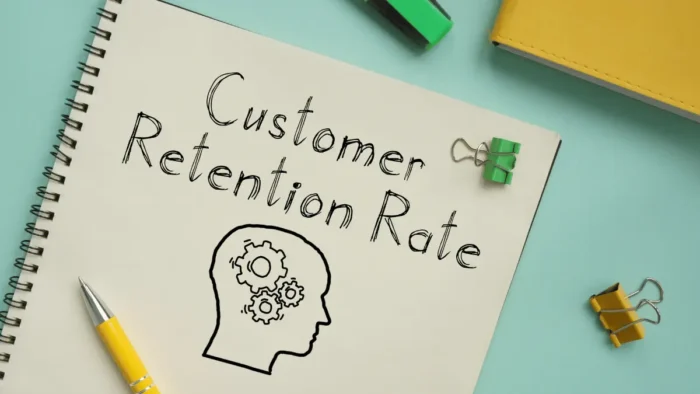Focusing on retaining your customers for long-term success is essential in today’s business environment. Although acquiring customers is important, keeping existing ones can benefit your company’s financial performance because onboarding new customers is becoming costlier than ever. A higher customer retention rate not only means having devoted customers but also leads to increased revenue and reduced marketing expenses.
You need to do much less to retain existing customers, so it makes sense to go the extra mile to retain them rather than only work hard and relentlessly to acquire new ones. Customer retention is vital to keeping your business succeeding, even during challenging times like today.
To help you improve your customer retention rate, here we will discuss ten strategies that you can start implementing today. These tips may help you gain valuable insights into how to retain your customers and, in so doing, improve your average customer lifetime value.
📖 Key Takeaways
- Having insights into customer retention matters is important because you will know much more about current customers’ satisfaction and loyalty. If there are any hiccups, you can improve your customer retention strategies.
- Boosting customer retention is something that will bring you long-term success in your company. It is not enough to focus only on lead generation. You must also develop some specific customer retention program that will be implemented, tested, and improved.
- There are many strategies you can use, but here, we propose 15 customer retention strategies you can use. Don’t focus only on one strategy, such as loyalty programs. Ensure you have the right mix of different strategies that will bring you real results.
What is Customer Retention?
Getting things right without a perfect understanding of customer retention is hard.
In essence, customer retention refers to any marketing process or strategy that has been put in place to engage existing business customers and secure their interests. With this interest secured, such repeat customers will continue to purchase the goods and services offered by your business.
While lead generation and customer acquisition are still important for your business growth, a high conversion rate may not be at the highest possible level. This is especially true if your company cannot keep paying customers interested enough to continue purchasing the goods and services you are offering.
Why is Customer Retention Important for Your Business?
Lead generation can be expensive, so you must have a working customer retention strategy in place. Customer retention is not only easier and much less expensive, but it also forms a major process affecting your business’s overall strength and revenue capacity.
I have worked with a client to improve his business’s customer retention process. We have analyzed many data points from internal databases and started measuring the costs of acquiring new customers and retaining existing customers. What we found from this process was really surprising (see image below).
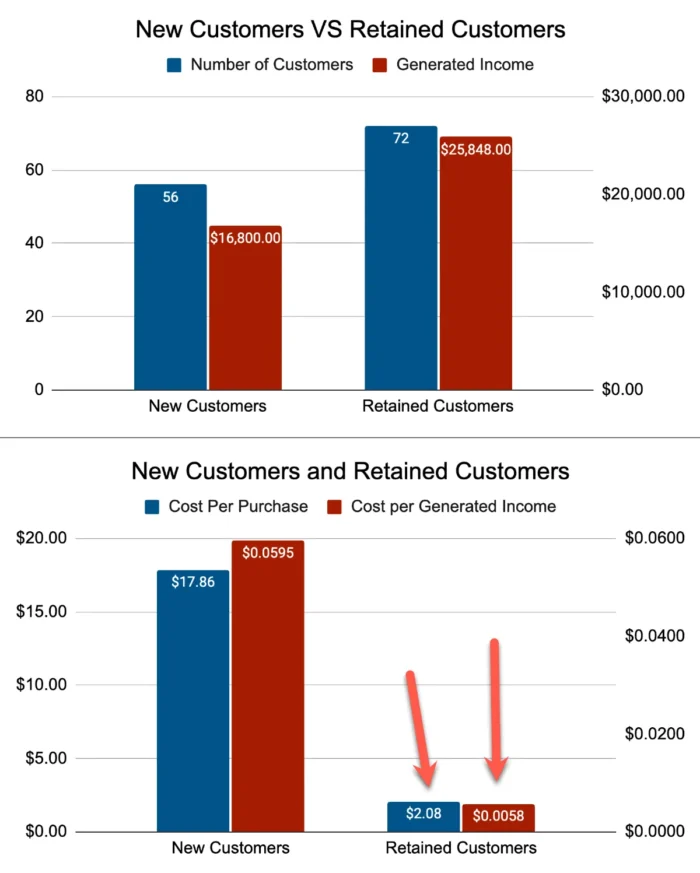
As you can see, the cost of acquiring new customers was more than eight times less for customer retention than for new lead generation. I have been aware that this number is around five times based on statistics I have consulted, but still, I did not expect we would achieve these numbers in the analyzed time frame.
The ratio is even higher when it comes to costs per generated income. As you can see, for each new customer for which we spend $0.0595, we generate $1, while we spend only $0.0058 to retain one customer and generate the same $1. This metric shows us that customer retention is ten times more efficient for income generation because customers spend more and cost less.
These numbers confirm the statistics I’ve read on Forbes that a mere 5% increase in customer retention can lead to more than a 25% increase in profit, which shows the significant impact that focusing on existing customers can have on a company’s bottom line.
So, the retention of customers is crucial for your business’s long-term success and growth. Here are some key reasons why you should prioritize it:
1. You will achieve higher revenue for your business
As you can see from the results we achieved with one company (and I have also seen other companies with similar achievements in my experience), retaining customers can drastically grow your revenue. This is because retained customers will trust you more and likely spend more over time.
2. Low level of marketing expenses
Also, you have seen from our case that acquiring new customers can be expensive, especially until they start trusting your business. So, investing in customer retention saves you from constantly spending resources on new customer acquisition.
3. Word-of-mouth marketing
What is also important is that satisfied customers who come back are more likely to recommend your business to others. In our case, we have measured last year with one small business owner the results for recommendations related to a number of purchases in 2023.
First, we followed social media recommendations, such as mentioning the brand, sharing the brand’s posts, or writing about customer experience with the brand. The second way was to survey repeat customers and ask them “how likely it is that they will recommend the company to their friends or relatives.” We simply wanted to collect data to find ways to further improve customer retention.
Here are the results we get from this analysis:
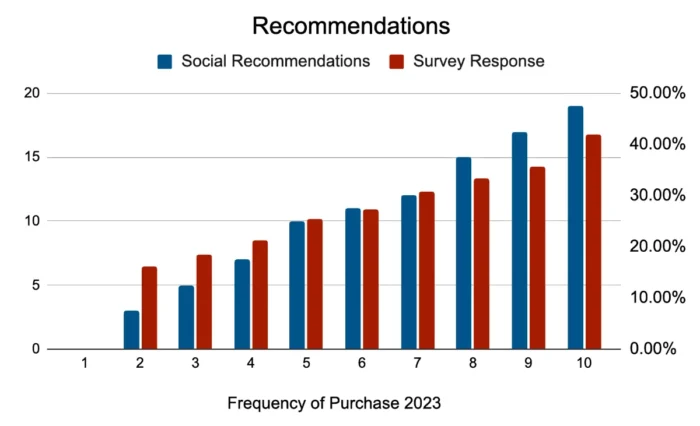
As you can see, repeat buyers lead to potential new customers through word-of-mouth marketing.
4. Competitive advantage
Having as many repeat customers as possible will help you better plan and predict the future regarding possible investments in product improvements, new offerings, and better communication with customers.
So, high customer retention can give you an advantage over your competitors and help you stand out in the industry.
Related: 22 Competitive Analysis Questions to Beat Your Competitors
5. Brand loyalty
If you have a repeat customer, he is more loyal to your business, and such customers are likelier to stick with you, even during difficult times or when competing offers are available.
How do You Calculate and Measure Customer Retention Rate?
Before we start with some possible customer retention strategies, it’s important to understand how you can calculate your customer retention rate. This metric measures the percentage of customers that continue doing business with you over a period of time.
Why do you need to measure this rate? Simply because you want to know where you are regarding retention and what you must do to increase customer retention.
It can be calculated by subtracting the number of first-time customers from the number of customers at the end of the period and dividing that by the number of customers at the start of the period.
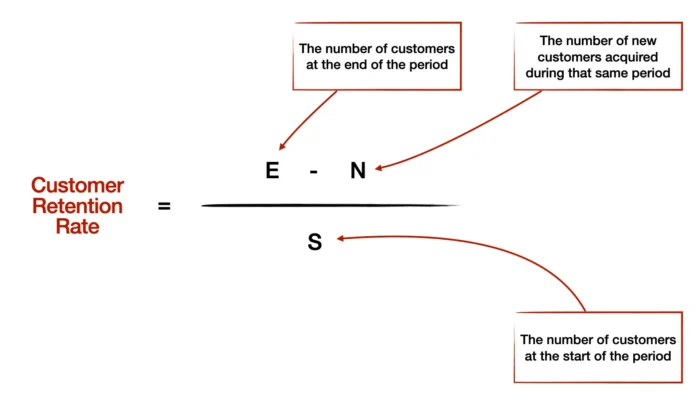
As you can see, you must always work on increasing the “E”, or the number of customers at the end of the analyzed period inside the formula, if you want to improve customer retention, regardless of the number of new customers acquired (N).
In addition to the customer retention rate, you should measure other key customer retention metrics to understand fully how your business retains its customers.
Customer Churn Rate
This measures the percentage of customers lost over a given period, which is the inverse of the retention rate. It is presented in percentage and can be calculated if you divide customers lost in the analyzed period by the total number of customers at the start of the period:

Average Customer Lifetime Value
Customer lifetime value (CLV) is a metric that calculates the average amount a customer spends on your business over their lifetime. It can be calculated using this formula:
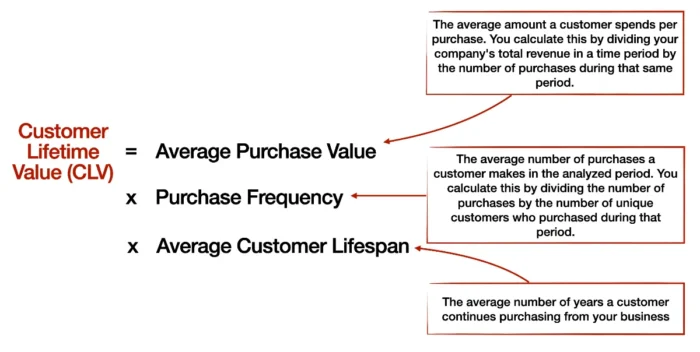
Repeat Purchase Rate
This measures the percentage of customers who make more than one purchase from your business. It can be calculated using this formula:

Related: 31 Startup KPIs and Metrics to Measure with Examples
Before You Start With the Customer Retention Strategies…
1. Know Your Customer
To retain customers, you must first understand them on a personal level. While customers are bombarded by new ads, products, and promotions every day, successful brands distinguish themselves by their ability to know their audience’s needs, wants, and values.
Therefore, you must clearly define your target audience because this information will help you set clear goals and KPIs regarding the customer base.

2. Develop an Overall Customer Retention Strategy and Set Goals
Before anything you take, ensure you have a strategic approach. So, you must develop a clear customer retention strategy that will contain:
- Clear and realistic goals,
- Strategies you will use to increase the number of customers that repeat business with you
- Clear action steps with KPIs for each one and responsibilities for all of your team members.
One of the most important challenges for most businesses is the inability to set realistic goals within a customer retention strategy. Realistic goals are those that are achievable within the period you have allotted.
Before approaching any marketing strategy, you must ensure that you set realistic goals and work towards them. Setting realistic goals that you can meet within the time frame can also improve client confidence in your abilities.
For example, when setting sales goals, don’t just create a number and promise your client delivery. Instead, analyze the current customer case and retention rate. Based on this study, estimate a realistic goal that can be reached and work towards delivering results.
3. Map Your Customer’s Engagement Journey
It is not possible to have a straight route linking potential customers to paying customers. In some cases, paying customers may be generated through word of mouth, while others may be generated through curiosity.
However, you want to be sure of the routes that generate the most leads. This is important because it clearly explains the customer’s journey.
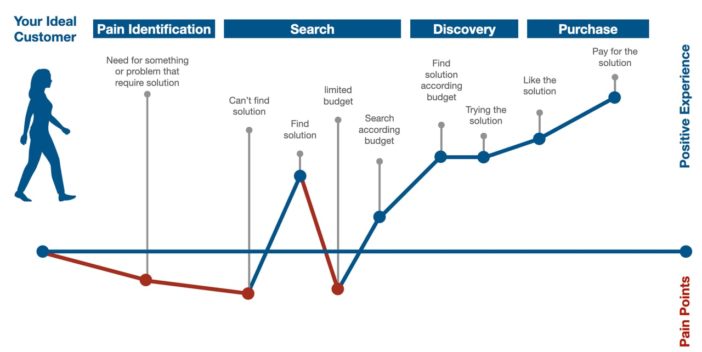
Once you can determine the customer’s journey, including how your potential customers became aware of your brand (sales funnel), how active customers engage with it through different channels, the number of referrals, and other factors, acquiring new leads and then working on retaining them is easier.

4. Stay Up to Date With the Latest Trends in Your Industry
While it’s essential to understand your customers personally, you must also keep up to date with the latest trends and changes in your industry.
For example, chatbots have become essential, allowing consumers to engage with brands quickly. There are many different chatbot plugins and programs out there to choose from. If you have a Joomla website, for example, then the Joomla live chat plugin can handle essential communications such as virtual greetings or responses during your conversation with clients on their visit, all via one click.
Related: What is a Chatbox? Methods to Increase Conversion on the Site Using Live Chats
Customer Retention Strategies You Can Use
Now that you understand what retention is, why you need always to work to improve your customer retention rates, and how to calculate and use important KPIs, we can go with the strategies you can use:
1. Make the right first impression
First impressions in the business world can determine whether a customer will return for more goods and services. As part of your retention strategy, you must make the best possible impression on customers.
Whether it is your website, blog, retail store, or a meeting room inside your company, ensure that the first impression lasts in the eyes of your potential customers. This is the first contact between your business and them, and how they perceive you is important for your future success.

2. Value proposition
To retain clients’ attention and turn them into loyal paying customers, you must provide them with reasons to believe that your products and services are the ultimate solutions to their needs. So, pay attention to the perceived value, which is almost as important as the product value.
Related: How To Build a Superior Value Proposition
3. Simplify the conversion journey
Customers are increasingly losing their attention span. This means that an average customer will most likely dump an ordering process if more than 3-4 steps to checkout.
Making the process easy for clients can be a great way to ensure that their attention doesn’t wane. A customer will most likely come back to make many more orders when they are sure you can complete the process in as few as 2-3 easy steps.
For example, e-commerce conversion is challenging because even a minor glitch in the funnel may lead to the customer abandoning the cart and never coming back.
Make sure that the journey is as smooth as possible. Applications like SamCart or ClickFunnels can help you create engaging and conversion-optimized checkout pages. You can check SamCart reviews before using them.
4. Communication is key!
Customers want to be sure that they are not only dealing with machines but also with humans.
By maintaining meaningful communication with clients, you can better establish a loyal following of fans who are ready to try new products and, ultimately, spread the word.
Stay connected with your customers by updating them on products or services, upcoming promotions, and industry-related news. Communicate through newsletters, email campaigns, and personalized messages.
Lastly, remember to communicate openly with your customers and ask for regular feedback. If a customer has a complaint about one of your products or services, ask to learn more about this dissatisfaction. This will ensure that you always work on improving customer experience.
At the end of the day, retaining customers involves providing a consistent, omnichannel experience that customers appreciate in a brand. In today’s competitive market, you need to think outside the box to succeed. Retaining customers creates that competitive edge that saves you money and sets you up for success.
5. Go above and beyond with exceptional customer service
Providing customer service should be at the core of your customer retention strategies. Ensure your team is well-trained in handling customer inquiries, addressing concerns promptly and personally, and offering customized support. Going above and beyond to delight your customers will make them more inclined to remain loyal to your brand.
While product quality cannot be compromised, going above and beyond with customer service can create an extraordinary customer experience. Buyers who are happy with your experience will most likely return for more. It is critical to have a team that gives its best to ensure satisfying experiences for every buyer who interacts with it.
Also, if there are some hiccups and some of your customers are unsatisfied, you must ensure you have a backup plan.
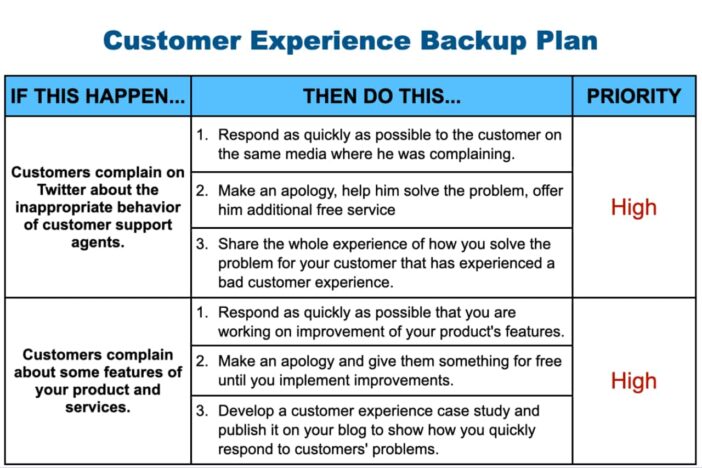
6. Offer surprises
Another great customer retention strategy is to offer occasional surprises. You can select some important customers who bring new businesses through referrals, personalized gifts, or handwritten notes.
The financial investment you make in these free surprises pays off in the long run, because, as we already discussed, retaining customers is far more cost-effective than acquiring new ones. If you cannot invest money in such surprises, you can still impress customers by giving them a shoutout on social media, writing on your blog about their achievements, or inviting them to brand events.
7. Segment and personalize
Customize your products or services according to your customer’s unique needs and preferences.
If you understand their pain points and desires, you can provide personalized solutions as your product or service that offer true value. This approach improves customer satisfaction and strengthens the connection between your brand and customers.
Remember that today, customers have multiple options in brands and products, and it is easy to lose even your loyal customers if you fail to appreciate them. An effort to personalize interactions on calls, chats, and emails shows your intention to value their presence and keep them hooked for the long haul.
Be careful! Remember, you must target potential customers with the right purchase intent when it comes to personalized customer experiences to improving customer retention.
Related: How to Find Customers With the Right Purchase Intent
8. Develop a strong brand identity

Another strategy is to develop a strong brand identity that establishes deeper emotional customer relationships. Your voice and visual style must resonate with the target audience you aim to reach.
Check your brand across all touchpoints with valued customers, such as your website, social media channels, and even product packaging, from steps to attract customers to steps for customer support. Then, you can find improvement opportunities to develop and maintain a great brand identity.
Building a strong brand identity fosters customer loyalty, encouraging customers to repeat purchases and reducing the likelihood of them switching to competitors.
Related: Increase Your Brand Potential: How to Measure and Strategies
9. Provide incentives for loyal customers – loyalty program
One effective way to boost customer retention is by implementing customer loyalty programs that reward customers for their support. You can offer customers extras, discounts, or freebies as an incentive for their continued business and encourage them to refer friends and family.
Remember that developing a loyalty program that rewards customers for their continued business is one of the best ways to retain customers. If a higher number of customers are loyal customers, they feel appreciated, and as a part of the brand’s journey, they’re more likely to remain loyal.
Also, you can identify your most loyal customers and turn them into brand champions in such a way as to improve your net promoter scores, which will bring more customers and increase customer retention rates.
In addition to implementing a loyalty program, you can also consider offering incentives to encourage repeat business from your customers. These incentives could include discounts, time-limited offers, access to events, or anything else that can make your loyal customers feel appreciated. You can encourage repeat purchases and increase brand loyalty by creating a sense of urgency and exclusivity.
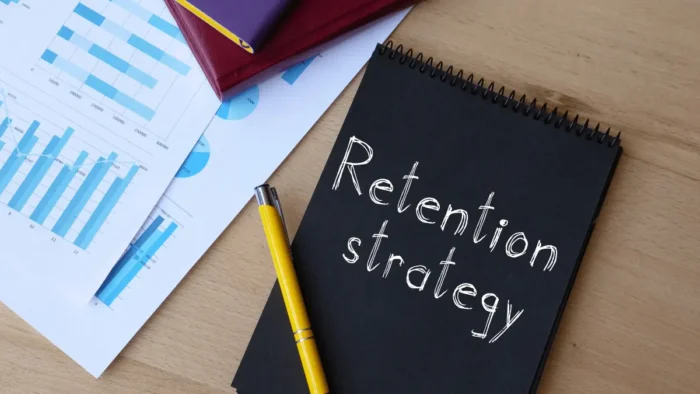
10. Actively respond to any customer feedback
You must collect customer feedback to better understand their experiences and what they expect from you as the highest priority. It is important for you to understand how to be more successful in achieving repeat purchases.
You can gather customer feedback through customer support queries, customer surveys, feedback forms, or social media polls to collect insights that can help improve your offerings.
Pay attention to both negative and positive feedback about customer experience and promptly address any concerns. By demonstrating to your customers that you value the opinions they say through your customer feedback loop, you are showcasing your dedication to their satisfaction, which in turn will help you increase customer retention.
11. Establish a community
Besides excellent customer service, you can also create a community forum or Facebook group where your customers can connect with each other and engage between themselves and your brand. This platform will help you promote a sense of belonging and encourage customers to become advocates for your brand.
According to my experience, achieving active participation is really time-consuming, and you can not achieve success alone. Try assigning responsibilities to different team members to be community moderators. To ensure active participation from your customers, you must encourage discussions, offer content, encourage the most active to become moderators, and provide different opportunities for customers to share their experiences.
Remember, a dynamic online community can significantly improve your efforts to retain customers.
12. Adopt continuous innovation
You must always be one step ahead of the competition by innovating and improving your product or service, or your total offerings. Today, innovation is a way of doing business, and if you want some of the customers gained to become repeat customer, you must ensure that your offer bring them the best possible value for what customers invested in your product or service.
You must also stay updated on all important industry trends, listen carefully to their feedback, and invest in research and development initiatives. Offering improved solutions will keep your customers excited and interested in your brand.
If you succeed in demonstrating your company’s commitment to innovation, you will showcase your dedication to meeting customers’ evolving needs while helping retain their loyalty.
13. Build long-term connections
To foster long-lasting relationships with your customers, you must prioritize developing long-term connections with them instead of solely pursuing immediate gains. This will require you to invest in their prosperity and well-being beyond selling them your product or service.
Demonstrate care and curiosity about customer expectations, aspirations, obstacles, and achievements. Establish yourself as a trusted partner and forge a bond that competitors will find challenging to sever.
14. Reach out to your customers with relevant content
When it comes to creating content, businesses usually tend to overdo the selling part. Saturated with messages that are purely encouraging them to purchase products or services all the time, customers soon become jaded.
Alternatively, you can try delivering useful and relevant content from which your clients can derive actual value. This way, your messages don’t just sell. They also benefit your customers. In such a way, you will succeed in retaining your customers.
For example, if you deliver fresh products, you can create a newsletter that talks about how your subscribers can use them to create easy, healthy meals that their kids will actually love. So, you don’t show that only your success is important, but customer success is also important to you.
On the other hand, if you provide lawn mowing services, you can write a blog article discussing the process of composting, how it can be done at home, and how it can improve one’s garden. The possibilities are endless.
Related: Guide to Customer Acquisition and Retention Strategy
15. Reward and spotlight your customers
Your customers love to be reminded just how special they are to you, and they will certainly appreciate it if you show them that you value their part of your business.
You can give them gift cards during special holidays like the 4th of July, Thanksgiving, and Christmas Day or discount coupons on their birthday. You can even reward frequent buyers and renew subscribers by enrolling them in a loyalty program that allows them to take advantage of exclusive perks.
Another strategy you can try is involving your customers in the birthday celebration. Do you have a customer who’s doing charity work using your products or services? Feature them on your blog or in your social media posts.
Do you have a client who’s into creating awesome works of art or who is trying to achieve a monumental athletic feat? Maybe you can get them as your brand ambassadors. These are just some of the ways that you can delight your customers and humanize your brand simultaneously.
Conclusion
Effective customer retention strategies are a testament to your business’s longevity and relevance. By understanding the art and value of retaining customers, you not only secure a dependable revenue stream but also construct customer loyalty and a community of brand enthusiasts. Entrepreneurs, the path to enduring success begins with focusing on the customers you already have. It’s not just about keeping them; it’s about creating a magnetic relationship that can withstand time and tide.

